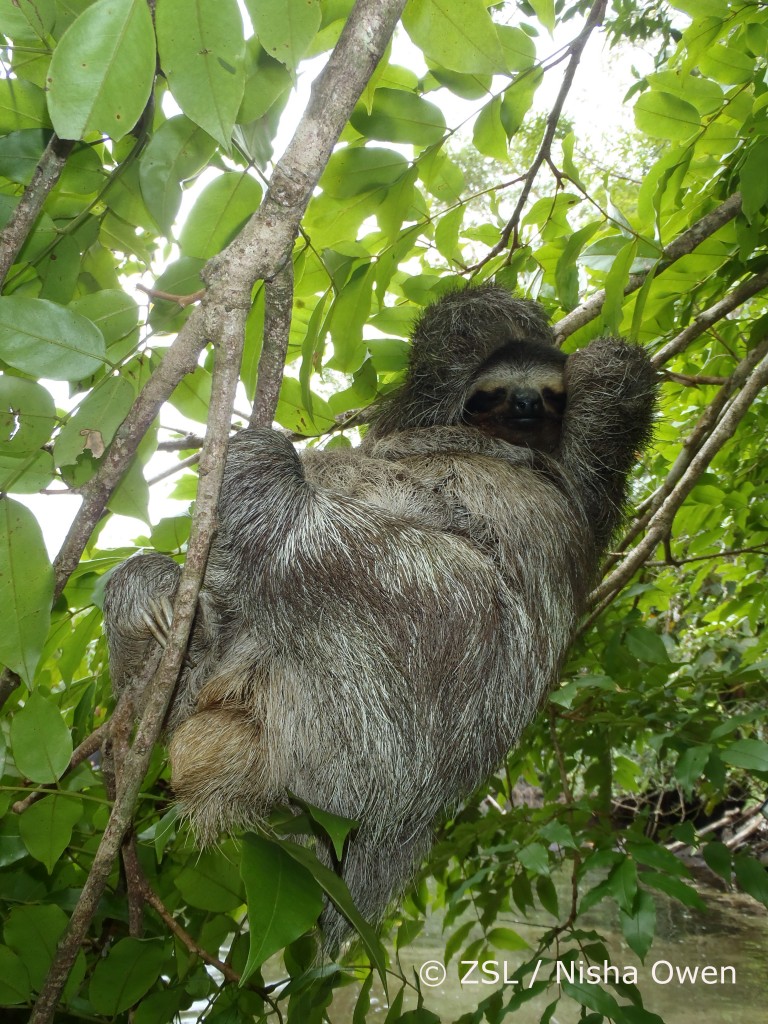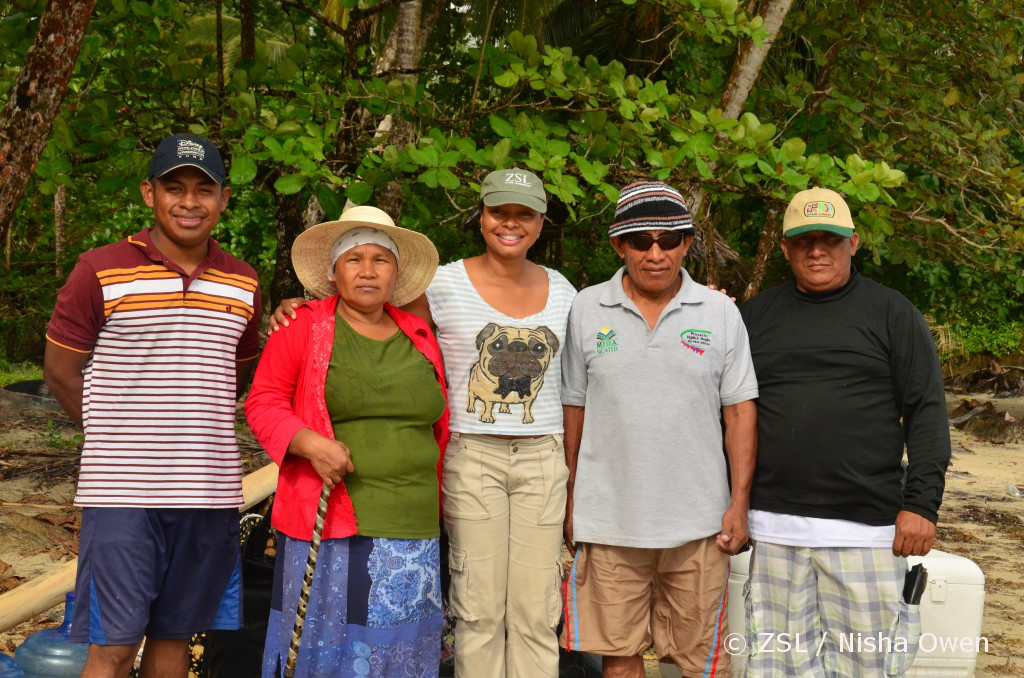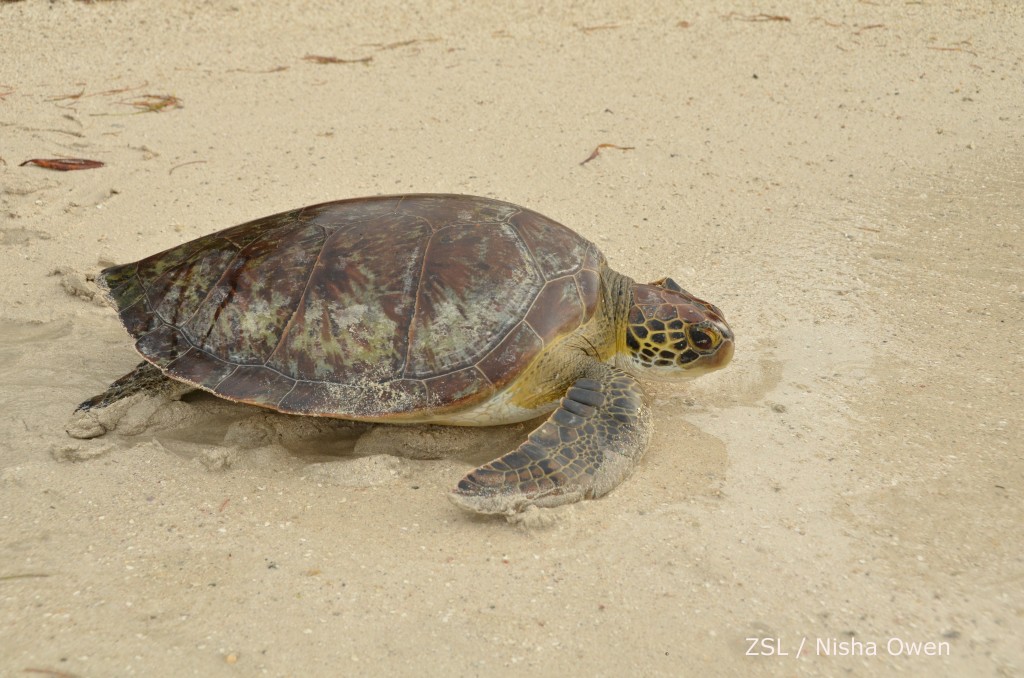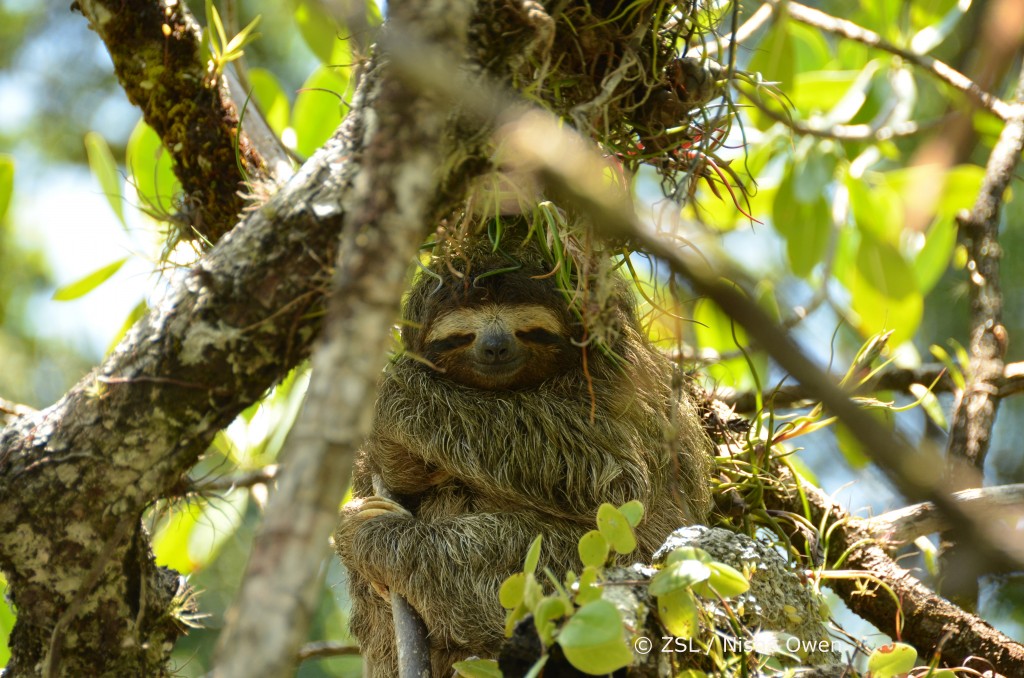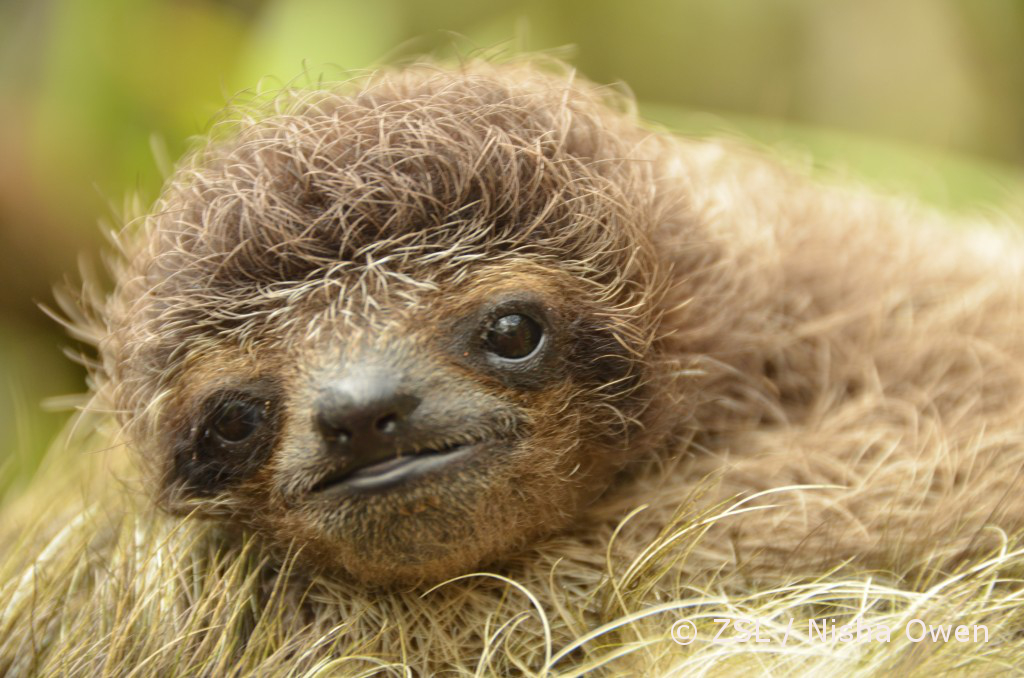Two years have passed since my first encounter with a female pygmy sloth and her baby on Escudo de Veraguas Island. With so little information about this species and little attention from the communities and environmental authorities on their status, we knew that the work to preserve the species would not be easy. To date, every visit to the island has advanced the study objectives; currently we are collecting data from the transepts in the mangroves the woods. With this we can estimate the number of pygmy sloths on the island.
For the first time in one of the visits, we had the opportunity to observe a pygmy sloth within one of the transects in the forest. This was exciting and we were very lucky! For a long time we believed the pygmy sloth was found only in the mangroves.
On each trip the Island showed more of its treasures; we have encountered boas in the mangrove during the transects, the little red frog and snakes in the forest, and the elusive endemic hummingbird on our walks through the transects. Perhaps the most important element for me is living with the indigenous Ngäbes learn more about their traditions and stories that surround the island Escudo de Veraguas, known in Ngäbere language as Dego. This working relationship and mutual teaching has allowed me to create new friends with many who have opened the doors of their homes and are part of the conservation process to the pygmy sloth.
At each visit we have received the support of members of the Ngäbe communities interested in joining us and the team in the field. Similarly, and with much effort, environmental authorities from the Ministry of Environment accompany investigators on each visit to the island to see first hand whatactivities are carried out in the home of the pygmy sloth, abnormalities in the fishing activities, and the use of the mangrove and the forest. These activities need to be regulated urgently and the environmental authorities have now seen this.
Escudo de Veraguas Island in Panama is not only the habitat of the pygmy sloth. It is also the nesting place for several species of sea turtles including the hawksbill turtle (Eretmochelys imbricata), which we had the opportunity to see when several of them made their first dip in the crystal clear waters,starting their long journey of survival. Turtle species are also being studied and several members of the communities are involved in this fieldwork as well as in our study of the pygmy sloth.
In our most recent trip in April we spend 5 days in the island with some visitors: Dr. Nisha Owen of ZSL, my assistant Hidalgo Taylor, and one member of the comarcal extension from the minister of the environment allocated to cover the Escudo de Veraguas Island. On this visit we had the opportunity to place a 5 telemetry collars in adult pygmy sloths, three males and two females, who were found in different mangroves. Also, on the backs of the animals, hidden under their hair we placed Mataki devices. These devices allow us to know the behaviour and movements in the mangrove or in border of the forest, through GPS data. The data of each pygmy sloth that carries a Mataki tag can be downloaded if it is within one kilometre, which can be detected by a base station maintained at a strategic point.
Fishermen and diver communities near the island use marine resources that the island provides, and they increasingly recognize the presence of pygmy sloth and that it is protected by law. This will be strengthened through educational workshops four communities (Bucori, Punta Sinaín, Tobobe and Playa Roja) which are mainly fishermen and divers of Escudo de Veraguas. We will talk about mangroves and their importance, forests, other species of importance in the island, but mainly the pygmy sloth and why it is important to learn to live with them through sustainable management of resources. These workshops involve members of the Ngäbe authorities, members of the ministry of environment and other researchers that will complement basic but important information transmitted to each community. Four schools will receive workbooks for classes with information on natural resources related to the Escudo de Veraguas Island, and basic information about the pygmy sloth. This will help us raise the awareness of new generations about conservation issues, and primarily the pygmy sloth and their habitat.
The pygmy sloth is known throughout the world for many people who never have visited the island, and technology has helped in this; our job is to share the information and knowledge of the pygmy sloth and their habitat with as many members of the communities that we can, with that sense of pride and awareness of being part of the island that represents a legacy for the Ngäbes.
Much has happened in two years, we are going slowly but carefully. like the sloth! One of the major goals of this work is to achieve a management plan of the Escudo de Veraguas Island with all stakeholder of the process.
